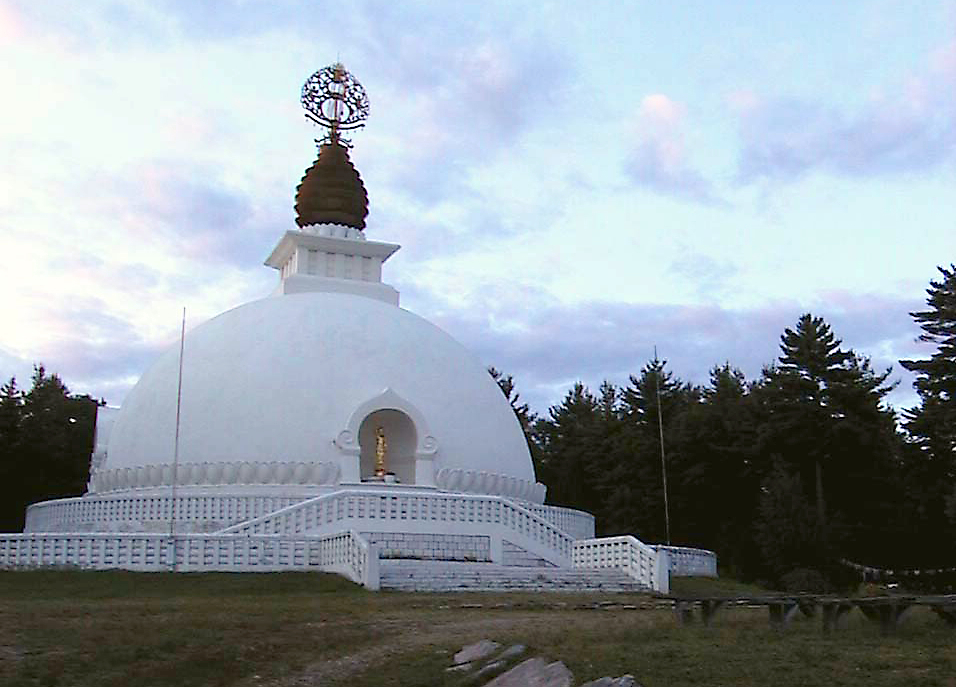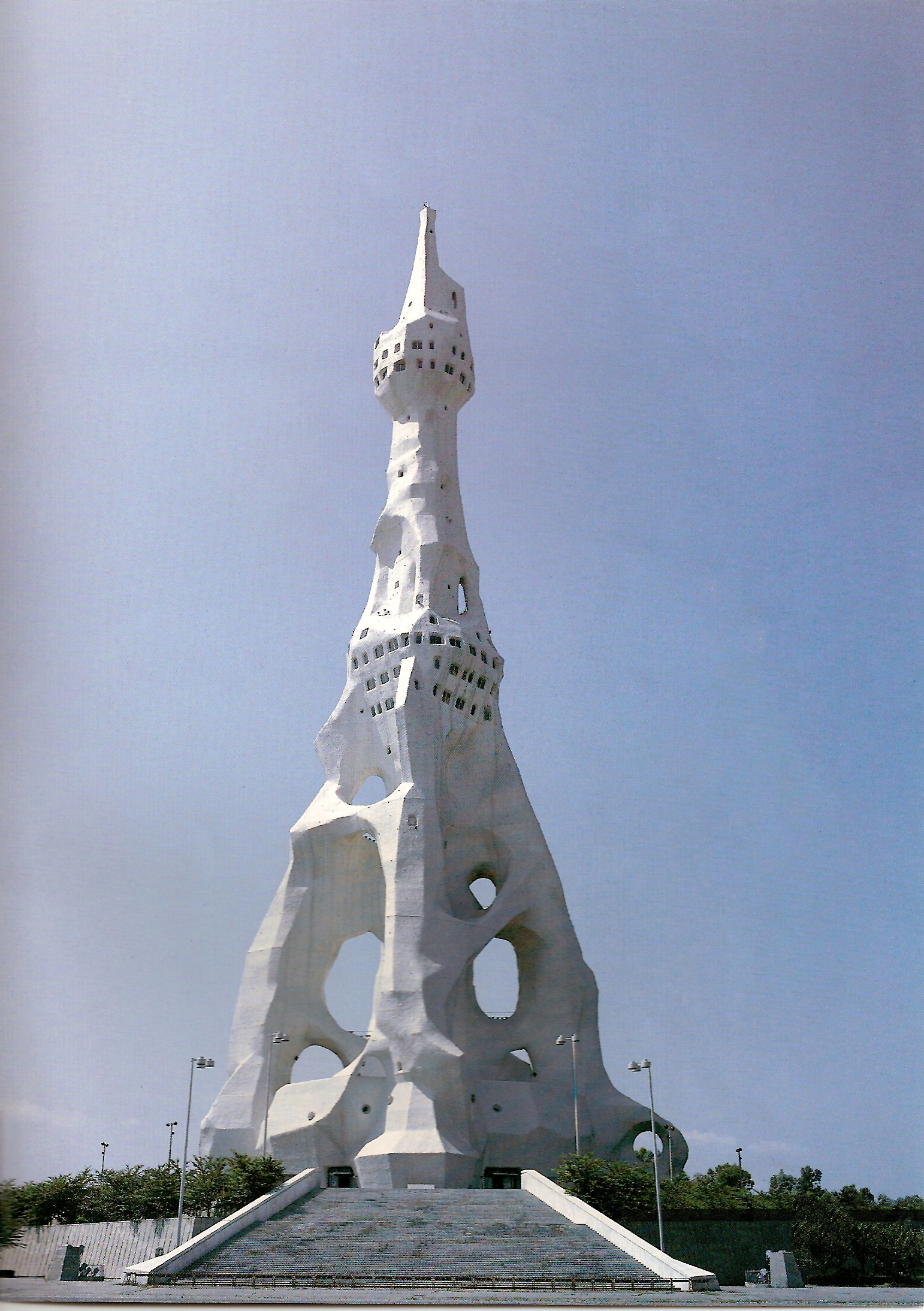|
Nipponzan-Myōhōji-Daisanga
, often referred to as just Nipponzan Myohoji or the Japan Buddha Sangha, is a Japanese new religious movement and activist group founded in 1917 by Nichidatsu Fujii, emerging from Nichiren Buddhism. "Nipponzan Myōhōji is a small Nichiren Buddhist order of about 1500 persons, including both monastics and lay persons." The community reveres the ''Lotus Sutra'' as the highest expression of the Buddhist message. In addition, it is actively engaged worldwide in the peace movement. It is the most pacifist group in Japan of seven religious movements surveyed by Robert Kisala. The main practice of Nichiren Buddhism is to chant ''Namu Myōhō Renge Kyō''. Nipponzan-Myōhōji monks, nuns and followers beat hand drums while chanting the ''Daimoku'', and walk throughout the world promoting peace and non-violence. They try to explain the meaning of their ministry to all wishing to understand it. History In 1917, Nipponzan-Myōhōji was founded in Liaoyang. In 1932, Nipponzan-Myōhōji m ... [...More Info...] [...Related Items...] OR: [Wikipedia] [Google] [Baidu] |
Nichiren Buddhism
Nichiren Buddhism (), also known as ''Hokkeshū'' (, meaning ''Lotus Sect''), is a branch of Mahayana Buddhism based on the teachings of the 13th-century Japanese Buddhist priest Nichiren (1222–1282) and is one of the Kamakura period schools. Its teachings derive from some 300–400 extant letters and treatises either authored by or attributed to Nichiren. Nichiren Buddhism generally sources its basic doctrine from the Lotus Sutra claiming that all sentient beings possess an internal Buddha-nature capable of attaining Buddhahood in the current life. There are three essential aspects to Nichiren Buddhism: # The faith in Nichiren's '' Gohonzon'' # The chanting of '' Nam Myoho Renge Kyo'' with varying recitations of the Lotus Sutra # The study of Nichiren's scriptural writings, called ''Gosho'' After his death, Nichiren left to both his senior disciples and lay followers the mandate to widely propagate the ''Gohonzon'' and chanting the '' Daimoku'' in order to secure the p ... [...More Info...] [...Related Items...] OR: [Wikipedia] [Google] [Baidu] |
Peace Walk
A peace walk or peace march, sometimes referred to as a peace pilgrimage, is a form of nonviolent action where a person or group marches a set distance to raise awareness for particular issues important to the walkers. 350 km Long Peace Walk New Zealand Kharlzada Kasrat Rai, twice the World Record holder for Peace Walks, has devoted his life for the cause of Peace, Education, Health and Cultural activities. He has achieved a widespread fame for the sake of his noble cause. He has conducted several walks with the flag of peace within and beyond the boundaries of Pakistan. In 2020, he made a 350 km Long Peace Walk from Wellington to Christchurch in commemoration of the Christchurch Mosques Attack. He is doing this walk voluntarily for the sake of humanity and Peace. The Peace Walk will start from New Zealand Parliament on 5 March. India Starting in 1951, Vinoba Bhave undertook a peace walk with many of his followers throughout India for land reform. He walked for more tha ... [...More Info...] [...Related Items...] OR: [Wikipedia] [Google] [Baidu] |
Nichidatsu Fujii
was a Japanese Buddhist monk, and founder of the Nipponzan-Myōhōji order of Buddhism. He is best known for his decision in 1947 to begin constructing Peace Pagodas in many locations around the world as shrines to world peace. Fujii was born into a peasant family in the wilderness of the Aso Caldera. At the age of 19, he was ordained a monk in the unusually ascetic and intellectual tradition of Hōon-ji in Usuki, Ōita. He started missionary activities in Manchuria in 1917, but the Great Kanto earthquake made him return to Japan in 1923. After reading Nichiren's declaration that the Lotus Sutra would one day be preached in India, he decided to go there. He arrived in Calcutta in January 1931 and walked throughout the town chanting the daimoku and beating a drum, a practice known as ''gyakku shōdai''.D.C. Ahir. ''The Pioneers of Buddhist Revival in India''. Delhi: Sri Satguru Publications, 1989. pp.50-54. In 1933, he met Mahatma Gandhi at his ashram in Wardha. Gandhi ... [...More Info...] [...Related Items...] OR: [Wikipedia] [Google] [Baidu] |
New England Peace Pagoda
The New England Peace Pagoda is a peace pagoda located in Leverett, Massachusetts. It was the first Nipponzan-Myōhōji-Daisanga, Nipponzan-Myōhōji peace pagoda to be built in the United States. History The peace pagoda is tied to Buddhism's Nichiren Buddhism, Nichiren tradition, and more specifically to the Nipponzan-Myōhōji order, which was founded in 1917 by Nichidatsu Fujii. In response to the atomic bombings of Hiroshima and Nagasaki, Fujii began constructing pagodas around the world to encourage peace in 1947. In 1982, the order held a series of peace walks to New York City to the United Nations special session on disarmament. One of the peace walks passed through western Massachusetts, and the area was identified as a potential site for a peace pagoda. The pagoda was completed in 1986, featuring a 100-foot-high dome and several statues of the Buddha, carved by Sri Lankan artisans. The site also contains a reflecting pool and rock garden. Peter Gregory, a religion pr ... [...More Info...] [...Related Items...] OR: [Wikipedia] [Google] [Baidu] |
Japanese New Religions
Japanese new religions are new religious movements established in Japan. In Japanese, they are called or . Japanese scholars classify all religious organizations founded since the middle of the 19th century as "new religions"; thus, the term refers to a great diversity and number of organizations. Most came into being in the mid-to-late twentieth century and are influenced by much older traditional religions including Buddhism and Shinto. Foreign influences include Christianity, the Bible, and the writings of Nostradamus. Before World War II In the 1860s, Japan began to experience great social turmoil and rapid modernization. As social conflicts emerged in this last decade of the Edo period, known as the Bakumatsu period, some new religious movements appeared. Among them were Tenrikyo, Kurozumikyo, and Oomoto, sometimes called () or "old new religions", which were directly influenced by Shinto (the State Shinto, state religion) and shamanism. The social tension continued to gr ... [...More Info...] [...Related Items...] OR: [Wikipedia] [Google] [Baidu] |
Iraq
Iraq, officially the Republic of Iraq, is a country in West Asia. It is bordered by Saudi Arabia to Iraq–Saudi Arabia border, the south, Turkey to Iraq–Turkey border, the north, Iran to Iran–Iraq border, the east, the Persian Gulf and Kuwait to the Iraq–Kuwait border, southeast, Jordan to Iraq–Jordan border, the southwest, and Syria to Iraq–Syria border, the west. The country covers an area of and has Demographics of Iraq, a population of over 46 million, making it the List of countries by area, 58th largest country by area and the List of countries by population, 31st most populous in the world. Baghdad, home to over 8 million people, is the capital city and the List of largest cities of Iraq, largest in the country. Starting in the 6th millennium BC, the fertile plains between Iraq's Tigris and Euphrates rivers, referred to as Mesopotamia, fostered the rise of early cities, civilisations, and empires including Sumer, Akkadian Empire, Akkad, and Assyria. Known ... [...More Info...] [...Related Items...] OR: [Wikipedia] [Google] [Baidu] |
Bosnia
Bosnia and Herzegovina, sometimes known as Bosnia-Herzegovina and informally as Bosnia, is a country in Southeast Europe. Situated on the Balkans, Balkan Peninsula, it borders Serbia to the east, Montenegro to the southeast, and Croatia to the north and southwest, with a coast on the Adriatic Sea in the south. Bosnia (region), Bosnia has a moderate continental climate with hot summers and cold, snowy winters. Its geography is largely mountainous, particularly in the central and eastern regions, which are dominated by the Dinaric Alps. Herzegovina, the smaller, southern region, has a Mediterranean climate and is mostly mountainous. Sarajevo is the capital and the largest city. The area has been inhabited since at least the Upper Paleolithic, with permanent human settlement traced to the Neolithic cultures of Butmir culture, Butmir, Kakanj culture, Kakanj, and Vučedol culture, Vučedol. After the arrival of the first Proto-Indo-Europeans, Indo-Europeans, the area was populated ... [...More Info...] [...Related Items...] OR: [Wikipedia] [Google] [Baidu] |
Hiroshima
is the capital of Hiroshima Prefecture in Japan. , the city had an estimated population of 1,199,391. The gross domestic product (GDP) in Greater Hiroshima, Hiroshima Urban Employment Area, was US$61.3 billion as of 2010. Kazumi Matsui has been the city's mayor since April 2011. The Hiroshima metropolitan area is the second largest urban area in the Chugoku Region of Japan, following the Okayama metropolitan area. Hiroshima was founded in 1589 as a Jōkamachi, castle town on the Ōta River river delta, delta. Following the Meiji Restoration in 1868, Hiroshima rapidly transformed into a major urban center and industrial hub. In 1889, Hiroshima officially gained city status. The city was a center of military activities during the Empire of Japan, imperial era, playing significant roles such as in the First Sino-Japanese War, the Russo-Japanese War, and the two world wars. Hiroshima was the first military target of a nuclear weapon in history. This occurred on August 6, 1945, i ... [...More Info...] [...Related Items...] OR: [Wikipedia] [Google] [Baidu] |
Auschwitz
Auschwitz, or Oświęcim, was a complex of over 40 concentration and extermination camps operated by Nazi Germany in occupied Poland (in a portion annexed into Germany in 1939) during World War II and the Holocaust. It consisted of Auschwitz I, the main camp (''Stammlager'') in Oświęcim; Auschwitz II-Birkenau, a concentration and extermination camp with gas chambers, Auschwitz III-Monowitz, a labour camp for the chemical conglomerate IG Farben, and dozens of subcamps. The camps became a major site of the Nazis' Final Solution to the Jewish question. After Germany initiated World War II by invading Poland in September 1939, the '' Schutzstaffel'' (SS) converted Auschwitz I, an army barracks, into a prisoner-of-war camp. The initial transport of political detainees to Auschwitz consisted almost solely of Poles (for whom the camp was initially established). For the first two years, the majority of inmates were Polish. In May 1940, German criminals brought to the ... [...More Info...] [...Related Items...] OR: [Wikipedia] [Google] [Baidu] |
Leverett, Massachusetts
Leverett is a town in Franklin County, Massachusetts, United States. The population was 1,865 as of the 2020 census. It is part of the Springfield, Massachusetts Metropolitan Statistical Area. History Leverett is one of the southernmost towns of Franklin County, located west of Shutesbury and Wendell, east of Sunderland, south of Montague, and north of Amherst. Leverett was originally part of Sunderland (named Swampfield at that time). The first non-indigenous settlement was established in 1750, and the settlers officially petitioned Sunderland to become their own town in 1774. The town was named for John Leverett, the twentieth Governor of the Massachusetts Bay Colony. In 1985, a Buddhist monastic order called Nipponzan Myohoji erected a large monument in Leverett. This structure, known as the New England Peace Pagoda, is considered the first of its kind in North America. Two historic Evangelical churches are also located in Leverett, North Leverett Baptist and Moore's Co ... [...More Info...] [...Related Items...] OR: [Wikipedia] [Google] [Baidu] |
Milton Keynes Parks Trust
The Parks Trust (originally, the Milton Keynes Parks Trust) is a British registered charity formed in 1992 by Milton Keynes Development Corporation to take over the public parks in Milton Keynes, Buckinghamshire. It was given a £20 million endowment, based mainly in various commercial and retail properties in the city, and a 999-year lease on around of open space. The Trust's chief executive is Victoria Miles MBE. Many of the parks feature significant public art, particularly in Campbell Park. Milton Keynes is unusual in that most of the parks are owned and managed by a Trust rather than the local authority (Milton Keynes City Council), to ensure that the management of MK's green spaces are largely independent of the council's expenditure priorities. Together, the Parks Trust and the City Council manage of parkland, woodland and other open space across the City of Milton Keynes The City of Milton Keynes is a Borough status in the United Kingdom, borough with City stat ... [...More Info...] [...Related Items...] OR: [Wikipedia] [Google] [Baidu] |
Milton Keynes
Milton Keynes ( ) is a city status in the United Kingdom, city in Buckinghamshire, England, about north-west of London. At the 2021 Census, the population of Milton Keynes urban area, its urban area was 264,349. The River Great Ouse forms the northern boundary of the urban area; a tributary, the River Ouzel, meanders through its linear parks and balancing lakes. Approximately 25% of the urban area is parkland or woodland and includes two Site of Special Scientific Interest, Sites of Special Scientific Interest (SSSIs). The city is made up of many different districts. In the 1960s, the government decided that a further generation of new towns in the United Kingdom, new towns in the South East England , south east of England was needed to relieve housing congestion in London. Milton Keynes was to be the biggest yet, with a population of 250,000 and area of . At designation, its area incorporated the existing towns of Bletchley, Fenny Stratford, Wolverton and Stony Stratford, ... [...More Info...] [...Related Items...] OR: [Wikipedia] [Google] [Baidu] |








